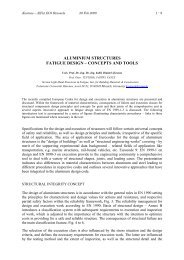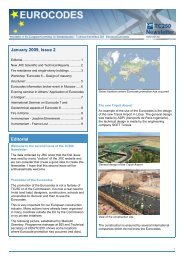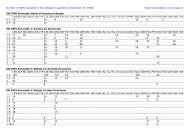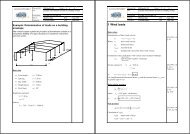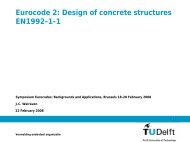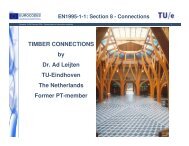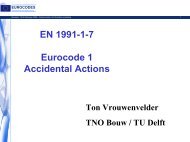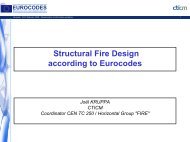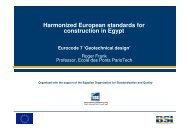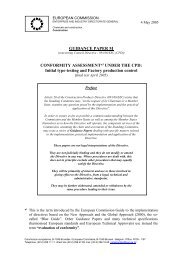Serviceability limit state - Eurocodes
Serviceability limit state - Eurocodes
Serviceability limit state - Eurocodes
Create successful ePaper yourself
Turn your PDF publications into a flip-book with our unique Google optimized e-Paper software.
Logarithmic damping decrement<br />
G. Hanswille<br />
Univ.-Prof. Dr.-Ing.<br />
Institute for Steel and<br />
Composite Structures<br />
University of Wuppertal-Germany<br />
6<br />
5<br />
4<br />
3<br />
2<br />
1<br />
results of measurements in buildings<br />
Damping<br />
ratioξ [%]<br />
δ = 2<br />
π<br />
ξ<br />
with finishes<br />
without finishes<br />
3 6 9 12<br />
f E<br />
[Hz]<br />
For the determination of the maximum<br />
acceleration the damping coefficient ζ or<br />
the logarithmic damping decrement δ<br />
must be determined. Values for composite<br />
beams are given in the literature. The<br />
logarithmic damping decrement is a<br />
function of the used materials, the<br />
damping of joints and bearings or support<br />
conditions and the natural frequency.<br />
For typical composite floor beams in<br />
buildings with natural frequencies<br />
between 3 and 6 Hz the following values<br />
for the logarithmic damping decrement<br />
can be assumed:<br />
δ=0,10<br />
floor beams without not loadbearing<br />
inner walls<br />
δ=0,15 floor beams with not loadbearing<br />
inner walls<br />
66







